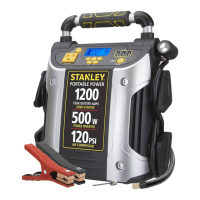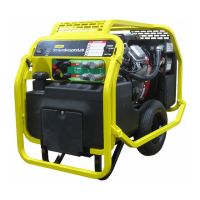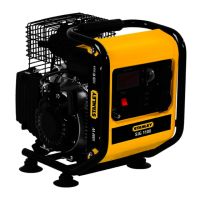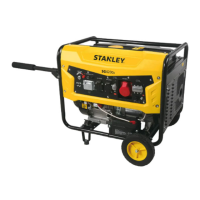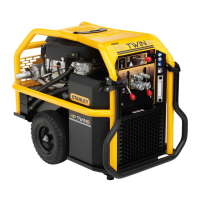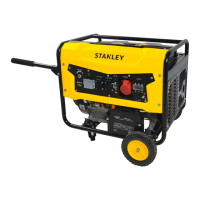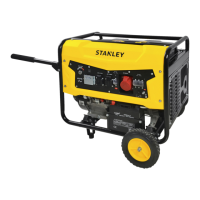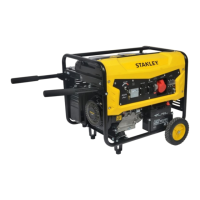16
GENERAL
Tests and adjustments should be performed periodically to
ensure the power unit is operating at maximum effi ciency.
Stanley Circuit Tester (part number 04182) is recommend-
ed. This tester can be used to isolate problems in both the
engine and hydraulic system prior to any power unit disas-
sembly.
TESTING THE HYDRAULIC CIRCUIT
The following tests can be performed to ensure that the
hydraulic pump is supplying the correct fl ow and pressure
and that the system relief valve is operating properly.
During these tests, make sure the engine is warm and op-
erating smoothly. If test results are not as specifi ed, refer to
the troubleshooting table in this section for possible causes.
TESTING THE 5 GPM HTMA TYPE 1 CIRCUIT
To test the circuit, proceed as follows:
1. Set the fl ow selector switch to the OFF (center) position.
2. Set the throttle control switch to AUTO-OFF position.
3. Connect the Stanley Circuit Tester across two hose ends
(where the tool would normally be connected).
4. Fully open the tester restrictor valve (counterclockwise).
5. Start the engine and allow it to run until warm.
6. Switch the fl ow selector switch to 5 or 8 gpm depending
on which fl ow you are testing.
7. With the engine at the programed speed, the test fl ow
gauge should read 4-6 gpm/15-23 lpm or 7-9 gpm/26.5-34
lpm.
8. Slowly turn the restrictor valve clockwise while watch-
ing the pressure gauge. The fl ow rate should stay at 4-6
gpm/15-23 lpm or 7-9 gpm/26.5-34 lpm as the pressure
gauge reaches 2100-2200 psi/148-155 bar.
TESTING & TROUBLESHOOTING
9. At 2100-2200 psi/148-155 bar, the relief valve should
begin to open. The pressure at which the relief valve just
begins to open is commonly referred to as the "cracking
pressure". At the "cracking pressure," the fl ow rate should
start to drop because the relief valve is allowing fl uid to by-
pass to the hydraulic reservoir. The "cracking pressure" is
preset at the factory and if it is not within the above range,
the relief valve must be re-set as follows:
a. The relief valve is located on the right side of the unit just
behind the dash panel. It putrudes out from the manifold
assembly. Use a open end or box end wrench to loosen the
nut on the relief valve.
b. Use an Allen wrench to adjust the relief valve. Turn
clockwise to raise the pressure and counterclockwise to
reduce the pressure.
c. Tighten the nut and retest.
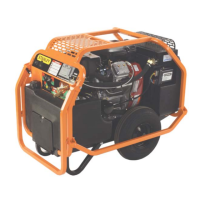
